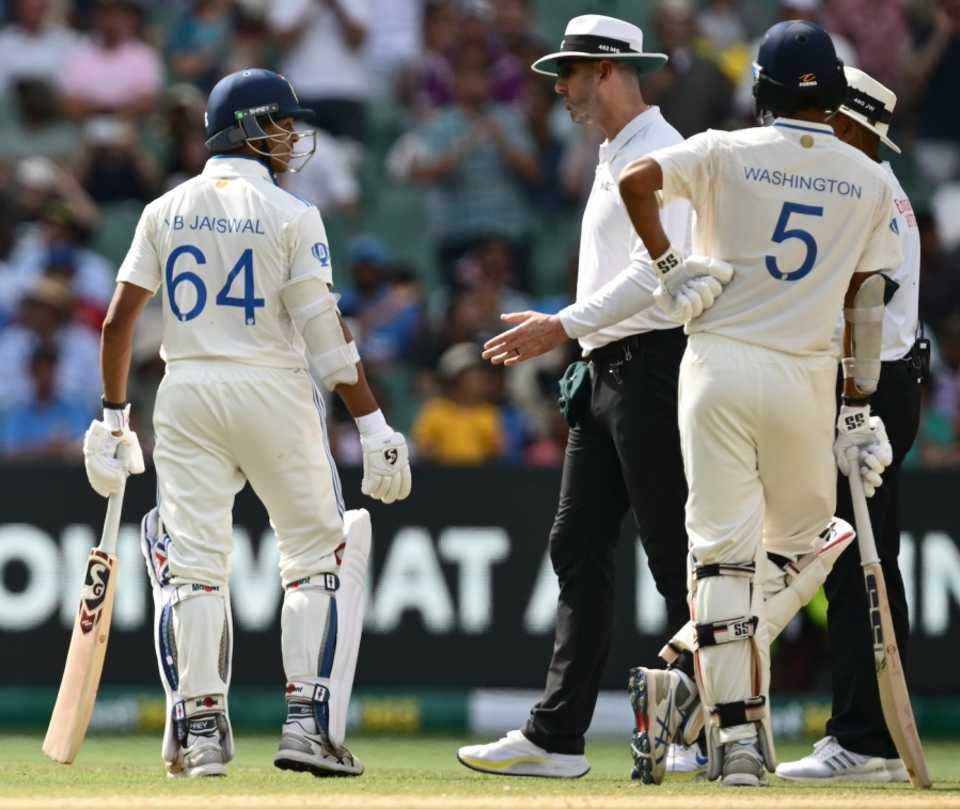
Yashasvi Jaiswal’s Controversial Dismissal in Boxing Day Test: Was the Right Call Made?
The Boxing Day Test at the Melbourne Cricket Ground witnessed a dramatic and controversial moment that has sparked heated debate among players, commentators, and fans alike. Yashasvi Jaiswal, India's rising star, was dismissed in a contentious caught-behind decision, leaving many questioning the use of technology in modern cricket. The decision came in the final session on day five, with India’s hopes of salvaging the match hanging by a thread.
Jaiswal, who had been batting solidly on 84 runs, attempted to hook a bouncer from Australia’s captain, Pat Cummins. The ball was caught by wicketkeeper Alex Carey, and the Australians immediately appealed. On-field umpire Joel Wilson ruled it not out, and Australia decided to review the decision. At first glance, the Snicko technology did not show any significant spike as the ball passed the bat, which suggested there was no contact. However, when regular replays were shown, a noticeable deflection in the ball's trajectory became visible.
Also Read:- Isa Guha’s Voice Steals the Show in Boxing Day Test Commentary, Fans Can’t Get Enough
- Giants Crush Colts’ Playoff Hopes, Stir 2025 NFL Draft Drama
Third umpire Sharfuddoula Saikat, after carefully reviewing the footage, overturned the on-field decision and declared Jaiswal out. This decision was met with disbelief from the Indian camp, with Rohit Sharma expressing his doubts about the technology’s reliability. "I don’t know what to make of that because the technology didn’t show anything," he said after the match. "But with the naked eye, it seemed like he did touch something." He also pointed out the unfortunate trend of India often being on the wrong side of technology-based decisions.
From the Australian perspective, however, Cummins was certain that Jaiswal had hit the ball. "I heard a noise, saw a deviation, and I was absolutely certain that he hit it," Cummins stated. "I think it was clear that he hit it. Ultra-edge didn’t show much, but fortunately, there was enough other evidence to show it was clearly out." Former umpire Simon Taufel supported the third umpire's decision, arguing that the visible deflection off the bat was conclusive enough to overturn the on-field call.
Despite the technical backing for the decision, the use of Snicko in such situations remains a point of contention. Cricket’s advanced technology, such as Snicko and HotSpot, is designed to provide clear answers in contentious decisions, but these systems are not flawless. In fact, as pointed out by Warren Brennan, the creator of ultra-edge technology, Snicko is less effective for glancing shots like the one Jaiswal played. "Glance shots are not Snicko’s strength," Brennan explained. "It’s much more effective when there’s a clear strike on the ball."
In this case, it was a difficult decision for the umpires, and the use of Snicko didn’t provide the kind of definitive evidence one might expect in such high-stakes moments. This has led many, including India great Sunil Gavaskar, to suggest that the deflection seen on the replays might have been an "optical illusion." Nevertheless, Ricky Ponting, another cricket legend, strongly backed the third umpire’s call, arguing that if technology provides evidence of a dismissal, it should be used to uphold the decision.
In the aftermath of Jaiswal’s dismissal, India’s chances of saving the Test were all but over. The team’s lower order crumbled, and Australia went on to secure a dominant 184-run victory. For Jaiswal, it was a bitter end to a marathon innings, and for the cricketing world, it raised important questions about the reliability and consistency of technology in the game. As Rohit Sharma put it, "More often than not, we are the ones falling on the wrong side of it," a sentiment that resonates with many who feel that sometimes, despite the advancements, cricket’s human element still remains the most reliable judge.
Read More:



0 Comments